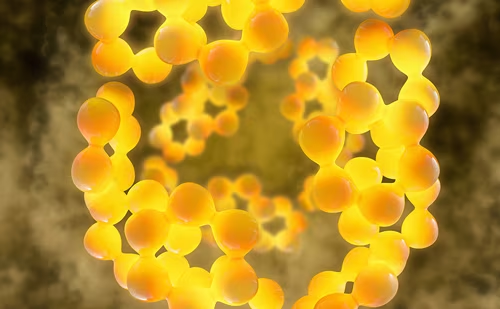Definition
Definition
Late-onset hypogonadism (LOH) is a clinical and biochemical syndrome associated with advancing age and characterized by typical symptoms and a deficiency in serum testosterone levels. LOH may result in significant detriment in the quality of life and adversely affect the function of multiple organ systems, particularly the musculo-skeletal system.1 In a proportion of patients presenting in this way, no specific cause can be identified apart from the ageing process itself, but the case-mix will include individuals with systemic diseases and lesions of the hypothalamic-pituitary region, as well as late-presenting congenital hypogonadism.
Diagnosis
Clinical diagnosis of LOH should be based on an adequate history and physical examination. The syndrome is characterized by diminished sexual desire and erectile quality and frequency, particularly nocturnal erections. Changes in mood with concomitant decreases in intellectual activity, cognitive functions, spatial orientation ability, fatigue, depressed mood and irritability may also be identified. Other characteristics include sleep disturbances, decrease in lean body mass with associated reduction in muscle volume and strength, increased visceral fat, reduced body hair, skin alterations, and decreased bone mineral density resulting in osteopenia, osteoporosis and increased risk of bone fractures. However, neither the signs nor the symptoms are specific enough for a conclusive diagnosis. Screening questionnaires are limited in their usefulness and their diagnostic specificity is low. Therefore biochemical assessments are necessary and blood sampling should ideally take place between 08.00 and 11.00 hours due to the circadian rhythm of testosterone production.1 The most widely accepted parameters to establish the presence of hypogonadism are the measurement of total testosterone and free testosterone calculated from measured total testosterone and sex hormone binding globulin or measured by a reliable free testosterone dialysis method.
Assessment of testosterone levels
It is important to know the adult male range of serum testosterone, bioavailable or free testosterone of the clinical laboratory. The lower limit of normal is internationally defined with total testosterone below 12 nmol/L or serum free testosterone below 250 pmol/L.1 A diagnosis of primary hypogonadism or testicular failure is unquestionable if serum total testosterone levels are clearly below the reference ranges and gonadotrophin levels are chronically higher than the normal range. If testosterone levels are below or at the lower limit of the accepted normal adult male values, it is recommended to perform a second determination together with assessment of luteinizing hormone and prolactin.1 Total testosterone levels between 8 and 12 nmol/L or free testosterone levels between 180 pmol/L and 250 pmol/L are regarded as borderline hypogonadal levels. A trial of testosterone treatment can be considered in those patients.1 Serum gonadotrophins should also be measured to differentiate individuals with a primary disorder of the testis (eg. Klinefelter’s), from those with deficient hypothalamic-pituitary function.1
Treatment
Commonly used testosterone formulations include injectable testosterone (testosterone cypionate, testosterone enanthate and testosterone undecanoate), oral testosterone (testosterone undecanoate), transdermal testosterone (testosterone patch or gel) and buccal testosterone.
A new, long-acting formulation of testosterone undecanoate for intramuscular injection
A new testosterone preparation for intramuscular injection, 1000 mg testosterone undecanoate (Nebido®), has recently been developed.2 Testosterone undecanoate is dissolved in castor oil for intramuscular injection and this depot formulation allows a remarkable extension of the injection interval from the 1–3 weeks with testosterone enanthate (i.e. 17–52 injections a year) to 10–14 weeks (i.e. usually four injections a year in long-term therapy). These characteristics of testosterone undecanoate can substantially improve both the acceptability and tolerability of testosterone injection therapy , as well as contributing to far more stable serum testosterone levels within the physiological normal range. Pharmacokinetic studies have shown intramuscular testosterone undecanoate to have a prolonged duration of action, allowing for the gradual extension of the injection interval from 6 weeks to 12 weeks.3 Subsequent clinical studies showed that one injection of intramuscular testosterone undecanoate 1000 mg maintained serum testosterone concentrations within the normal range for around 3 months whilst avoiding non-physiological peaks.4,5
In phase III studies, intramuscular testosterone undecanoate proved to be as efficient as the reference formulation of 250 mg testosterone enanthate in improving body composition, bone mineral density, muscle mass and strength, erythropoiesis, libido and potency as well as general well being and mood.2,6 Lipid metabolism showed favourable changes with slight decreases in total cholesterol and low density lipoprotein (LDL) cholesterol, whereas the mean high density lipoprotein (HDL) levels decreased slightly but remained within normal limits.2
Based on the pharmacokinetic data, the most rational and simple dosing scheme is a 6-week interval between the first and second injection followed by injections every 12 weeks. It is important to inject slowly and deeply into the gluteus maximus. After 12 weeks, the dosing interval can be adapted based on clinical symptoms and the trough testosterone level determined prior to the following injection. The trough level should be at the lower limit of the normal range.
Long-term experience with testosterone gel therapy
Testosterone gel (Testogel®) is a transparent colourless gel, which is available in sachets of 50 mg of testosterone in 5 g of gel, respectively. Doses need to be individually adjusted to between 5 and 10 g gel daily. Administration should be daily, preferably in the morning, to the skin of the upper arms, shoulder and/or abdomen and the gel is absorbed by the skin within a few minutes.
Pharmacokinetic studies have shown testosterone gel to provide steady serum testosterone concentrations within the physiological range. A 6-month trial in more than 150 hypogonadal men showed that treatment with testosterone gel, 50, 75 and 100 mg/day, significantly improved sexual function, mood, lean body mass and muscle strength and decreased fat mass and body fat.7 In an extension of this study, subjects continued treatment for up to 42 months and sexual desire, sexual activity and performance scores were significantly improved compared with baseline values and were maintained at the same level from 6 months until the end of treatment.8 Similarly, mood scores were improved, and lean body mass and bone mineral density were increased and fat mass was decreased with long-term treatment. Advantages of testosterone gel are that it is unobtrusive, can be administered by the patient himself and can be interrupted at any time. Skin irritation is a significantly smaller problem with testosterone gel than with testosterone patches.
Patient follow-up
It is important that both the physician and patient are committed to regular follow-ups for the duration of androgen therapy. Follow-up assessments should be performed every 3 months for the first year of therapy and once a year thereafter if no adverse effects occur. Improvement in signs and symptoms of testosterone deficiency should be sought and, if no benefit in clinical manifestations is apparent and there is no evidence for osteopaenia or osteoporosis, treatment could then be stopped.1 Assessment should include evaluation for possible adverse effects. Prostate health should be reviewed, including alterations in voiding pattern, the determination of prostate specific antigen (PSA) level and, possibly, digital rectal examination. Testosterone therapy is relatively contraindicated in patients with severe symptoms of lower urinary tract obstruction or clinical findings of bladder outflow obstruction due to an enlarged clinically benign prostate.1 Laboratory analyses should include assessment of haemoglobin and haematocrit: a modest elevation of haemoglobin and haematocrit from a low baseline is a frequent effect of no consequence (indeed, it is probably a therapeutic target), but supraphysiological elevations can be serious, particularly in the elderly. Assessment of bone mineral density every 3–5 years can also assist the physician in judging the adequacy of androgen replacement. Although the lipid profile should be checked for detrimental changes in HDL, testing for liver function is optional.
Testosterone therapy for hypogonadal men with prostate cancer
As both prostate cancer and late-onset hypogonadism occur more frequently after 50 years of age, some men with prostate cancer will have or develop late-onset hypogonadism and vice versa. The possible development or unmasking of prostate cancer is a major concern in treating late-onset hypogonadism, although evidence that testosterone therapy is causative is strikingly lacking.
A history of prostate cancer has been considered a contraindication for testosterone therapy.1 In recent years, however, widespread PSA screening and transrectal ultrasound-guided biopsies have resulted in the diagnosis of localized prostate cancer in many men. Indeed, there is an ongoing and unresolved debate among urologists as to the real value of PSA screening in the normal male population. Because many men are now apparently cured of their early stage prostate cancer, it has been suggested that the pros and cons of androgen therapy should be carefully considered in men without a recurrence.9 Furthermore, recent evidence suggests that selected men with hypogonadism and a past history of prostate cancer can safely receive testosterone replacement.10 However, this evidence, as established at the Consensus Conference on sexual dysfunction, is still limited and such men should be particularly carefully monitored.11
A review of 25 studies comparing testosterone levels in healthy volunteers and patients with prostate cancer found the mean testosterone levels at diagnosis to be the same in both groups in 15 studies (60 %); testosterone to be higher in patients in 4 trials (16%) and lower in 6 (24 %). Overall, 1481 patients and 2767 healthy volunteers were included in this review.12
Recommendations for androgen therapy to ensure prostate safety
Before initiating testosterone therapy in a man over the age of 40 years, documentation of a normal PSA level and probably also a digital rectal examination would be sensible. Follow-up monitoring at intervals of 3 months for the first year, then yearly thereafter has been recommended.13
The opinion of the author may not necessarily reflect the opinion of the company Schering AG.







